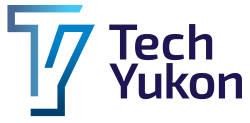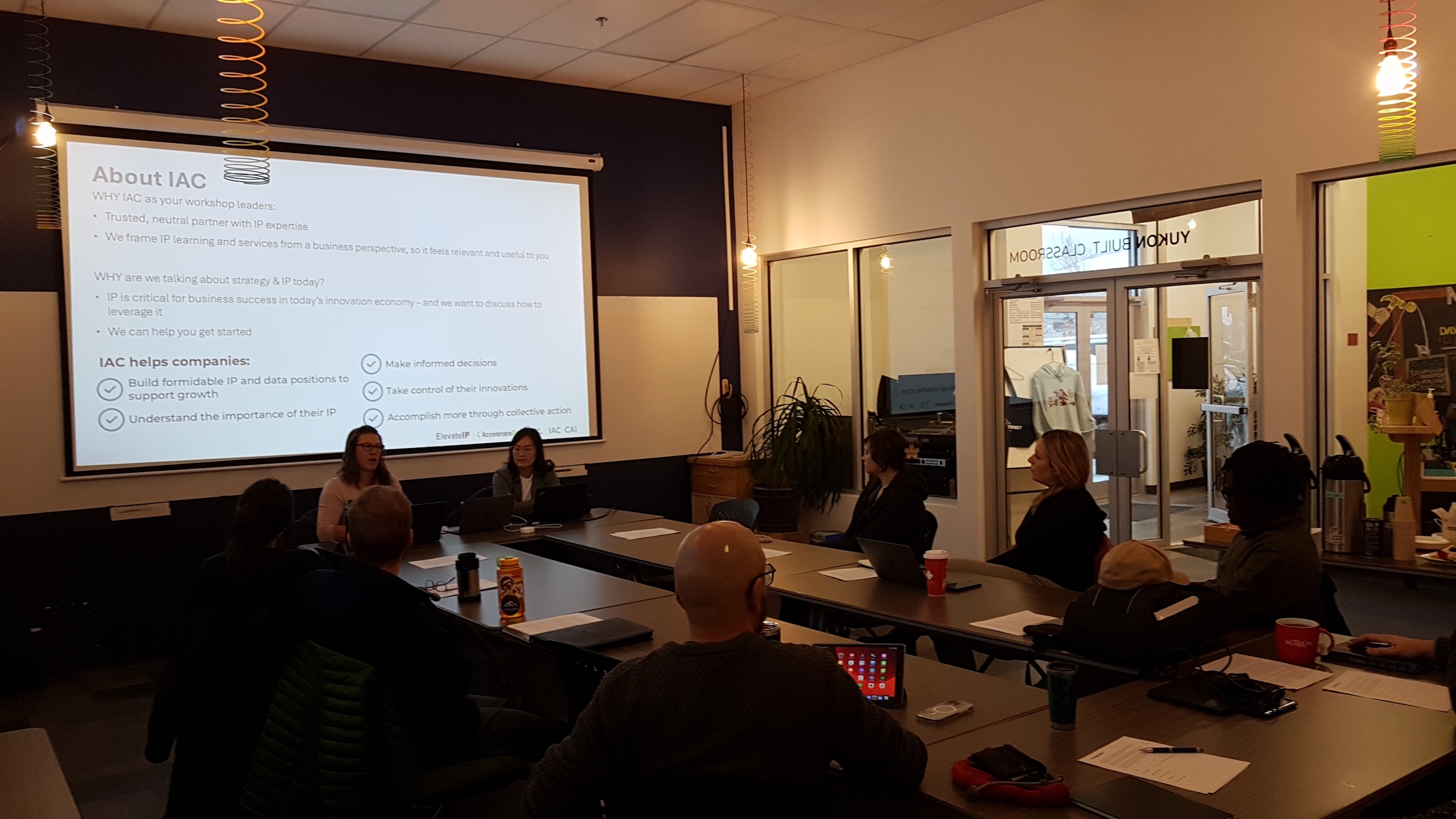Innovation Asset Collective (IAC) was invited to facilitate a full-day bootcamp to help local businesses better understand how to leverage Intellectual Property (IP) as a business asset and protect it.
Overview:
We opened the day by learning about the different IP types:
- Patents
- Trade Secrets
- Design Patents
- Trademarks
- Copyright
- Data
Key Takeaways:
- Trade Secrets aren’t just about keeping something under wraps and hoping nobody will learn about it. If properly safeguarded and documented, they are enforceable and you can pursue compensation for illegal breach of use/stolen secrets.
- Software code is copyright, but the function of it can be patented.
- Data, though not a formal protected IP type, is still very much an asset and should be subjected to the same policies and safeguards.
- IP isn’t solely about protection. Proper management can drive value too:
- Revenue opportunities through licensing (permission to use patented technologies or trademarks).
- To justify value (for investors + potential acquirers)
The 2nd portion of the morning was all about developing an IP Strategy
Understanding business objectives and how it shapes your approach to IP. We took a deep dive into analyzing a case study of a hypothetical business to identify what potential IP types they had and how they might want to approach prioritizing the different assets.
Key Takeaways:
- Jurisdictions (or countries) you decide to pursue patents in will be primarily determined by your target markets + manufacturing locations.
- Balance risk, timing, and cost as a startup. You may defer patenting and opt for keeping things as trade secret until the technology/market is better proven/tested.
- Strategically lengthening the process through filing a Patent Cooperation Treaty (PCT), despite the additional costs, may even be desired if more time is needed (e.g. to do the above, fundraise, or generate more revenue).
- Or expedited if you wish to pursue litigation against an infringement.
- There is no such thing as 100% freedom to operate. But understanding IP rights is a starting point.
- Do you have rights to use/sell the IP in your offerings?
- i.e. No point pursuing something that you may lose rights to commercialize.
- Understanding key pieces to building IP culture in an organization:
- IP Assignment, Non-disclosure & Non-compete agreements.
- Policies + Processes.
- Communicating changes between departments and teams.
- Mitigating risks when testing prototypes with customers.
Returning from lunch, we took a deep dive into Patents
Key Takeaways:
- Understanding jurisdictional (by country) filing and where to prioritize: Target Market vs. Manufacturing location
- Requirements for patenting:
- Novel (not already existing; however, improvements on an existing technology can be patented)
- Inventive (not obvious i.e. can’t just slap an eraser on the other end of a pencil and patent that)
- Utility (has to be useful i.e. not possible to patent a chemical you concocted but don’t know what to use for)
- Subject Matter (some things aren’t patentable e.g. mathematical equations, scientific principles, higher life forms – i.e. a new breed of mice).
- Understanding the structure of a patent
- Ensuring broad descriptions & claims to avoid unintentional limitations. e.g. “A solar cell embedded in a window pane”: if someone decides to overlay it, or instead, embed it into a windshield, they could circumvent your patent to use the technology.
- Process + Timeline & how to extend timeline (by up to 18 months) to file in additional jurisdictions using a Patent Cooperation Treaty (PCT) application.
- Software considerations: Focus on process + function, not on code/algorithms.
- Understanding Freedom To Operate (FTO):
- Patents are jurisdictional, therefore FTO also varies per region.
- Understanding your rights to better assess legitimate threats of litigation vs. trolls.
- Proactively justifying and improving patent portfolio (i.e. acquiring patents for technologies you use so competitors can’t buy them out to block you out) to improve FTO in a crowded space.
- You may not need to patent on day-1, but you need to start thinking about FTO on day-1 to ensure you don’t get locked out of your market.
- IP Valuation is different depending o perspective:
- Accounting: Mostly cost-based
- Legal: Justification of damages
- Investor/Acquirer: comparable market value of similar technology in other companies + potential
- Patents are a federal framework and there are no jurisdictional differences; therefore, you don’t necessarily need to find a local provider to work with. It’s more important to find a patent agent with experience in your industry/technology.
Next we went deep into Trademarks (TM)
Key Takeaways:
- Registration not required but beneficial:
- Avoids ambiguity around who started using it first (if someone else claims infringement).
- Ensures that your TM meets requirements and is enforceable.
- Requirements
- Distinctiveness: Descriptive words are weaker and harder to qualify vs. coined/arbitrary words.
- Avoids Confusion: Similar TMs may be registered if for a different classification of goods & services. Harder to register + narrower scope of protection if registering something similar to a TM that’s already used in the same classification.
- Actively used.
- Branding considerations & ease of identification with your customers.
Finally, we wrapped the day up discussing Data
Key Takeaways:
- Be aware of jurisdictional regulations on data collection:
- What can be collected
- Permissions required
- Ownership
- Permitted use
- Privacy & Security
- Data Strategy/Management
- Quality: clean, accurate, reliable, current, complete
- Policies & Processes: expectations, guidelines, best practices
- Technology: what is meaningful + how it’s captured, stored, and used.
- Ownership: responsibility & governance


